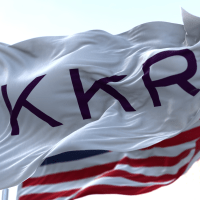Global markets experienced a rollercoaster 2016 as the outcomes of the UK's Brexit referendum and the US presidential election rocked investors, but the global private equity (PE) industry proved its resilience, turning in healthy results for the year.
Exit activity was strong, but overall totals for 2016 declined as deals that had been on hold during the global financial crisis were finally digested. With investors on the hunt for yield, PE remains a favoured asset for institutional investors.
Fundraising surged as limited partners (LPs) continued to recycle distributions into new capital commitments. Returns also had another strong showing, continuing to outperform public markets by a sizeable gap over both short-term and long-term time horizons. Global buyout activity, on the other hand, declined amid a challenging deal-making environment.
These are the key findings from Bain & Company, an adviser to PE investors, in its eighth annual Global Private Equity report, released at SuperReturn International.
In 2016, buyout-backed exits around the world dropped 23 per cent in value and 19 per cent in count from 2015 and fell even further from the record levels of 2014. But, asset sales of USD328 billion in disclosed value from 984 deals actually constitutes an extremely strong run, helping the industry deliver its fourth-best year ever by value. This decline was not reflective of a worsening exit environment, but was driven mainly by a leaner pipeline of deals ready for exit as the industry has largely worked through the backlog of assets invested prior to the global financial crisis.
"Given that exits flow from the deals done in previous years, the decline in exit value and count in 2016 wasn't much of a surprise," says Hugh MacArthur, who leads Bain's global private equity practice. "After several years, the industry has finally normalised through the exits of the massive deals done in 2006 and 2007, like a snake digesting an elephant-sized meal. So, while not quite the blowout of 2014 and 2015, last year still delivered an impressive showing overall for liquidity."
With nearly all of the pre-crisis deals exited, buyout firms are adjusting to a new normal with longer holding periods of about five years – up from the historical average of about 3.5 to 4 years. Bain expects this trend to continue in the medium term, as a result of high purchase prices and limited sources of market beta, requiring general partners (GPs) to roll up their sleeves and do the time-consuming work of creating value with their assets.
Buyout investment activity decreased in 2016: deal count declined 18 percent and value dropped by 14 percent from 2015 levels. Record-high asset valuations combined with stiff competition – particularly from corporate buyers – made it tougher for PE firms to do deals and achieve target returns. Purchase price multiples for buyouts rose to an average of 10.9x EBITDA for US deals in the third quarter of 2016. The difficulty of putting capital to work, combined with ongoing investor enthusiasm for the private equity asset class has led to a new record amount of dry powder, now totalling USD1.5 trillion across all PE fund types globally – USD534 billion of that targeted buyouts.
Today's marketplace requires PE firms to put their best foot forward, actively looking to improve their odds of sourcing more of the right deals. They can no longer wait for an offering to arrive on their doorstep and then react at the same time as the rest of the crowd.
"Deals are undoubtedly hard to come by. On average, studies show that PE firms see less than 20 percent of deals relevant to them in their pipeline," says MacArthur. "Finding deals takes a systematic approach starting with developing a sharp point of view about the type of deals the firm excels in doing and wants to find, even before any deal becomes a possibility. Leading firms then expand their network of the right people in the right places to help them find, diligence and close good deals."
According to MacArthur, when deals do materialise, they command high prices. And with an expected hold time of about 5 years, the margin of error for generating alpha and delivering acceptable returns to LPs has greatly narrowed. In response, GPs are codifying their battle-tested approaches – what they are good at, what has and has not created value, and where and how their funds have made money for investors – to build playbooks that consist of detailed, sequenced actions taken over time to maximize value from each investment.
In 2016, capital continued to pour into the PE industry, making it the fourth year in a row for solid fund-raising. In line with demand over the past several years, PE firms globally raised USD589 billion in capital, just 2 percent less than in 2015, aided by a surge of 11 mega-buyout funds – those raising more than USD5 billion – that closed to raise USD90 billion.
But could this be as good as it gets? Many GPs are apprehensive that the industry cannot sustain the torrid pace of fund-raising for much longer. Bain expects that distributions will continue to outpace contributions and LP commitment to the PE asset class will stay strong. However, the fund-raising environment may not be as favourable in coming years, making it important for GPs to focus on what makes them stand out from the pack.






